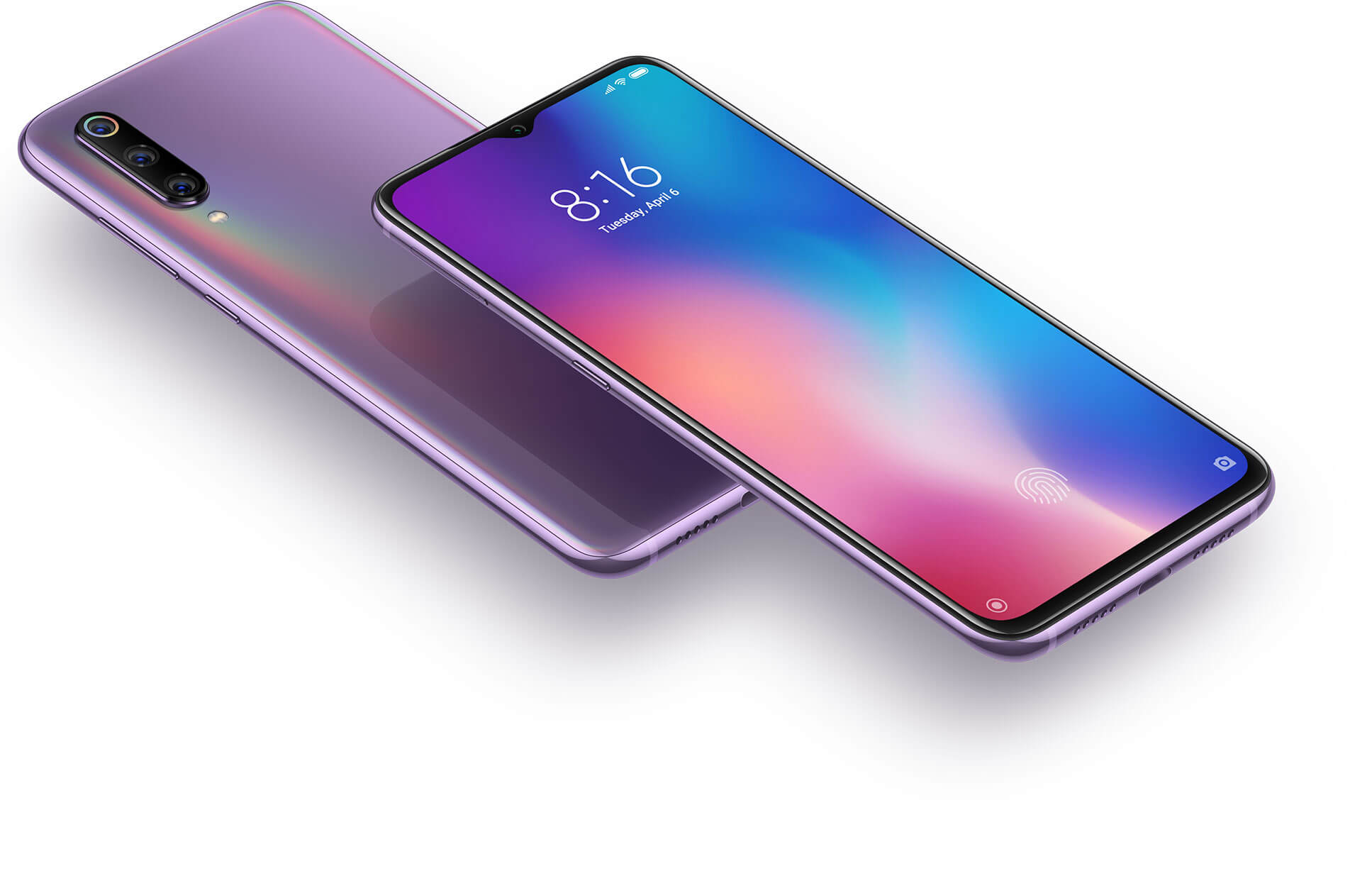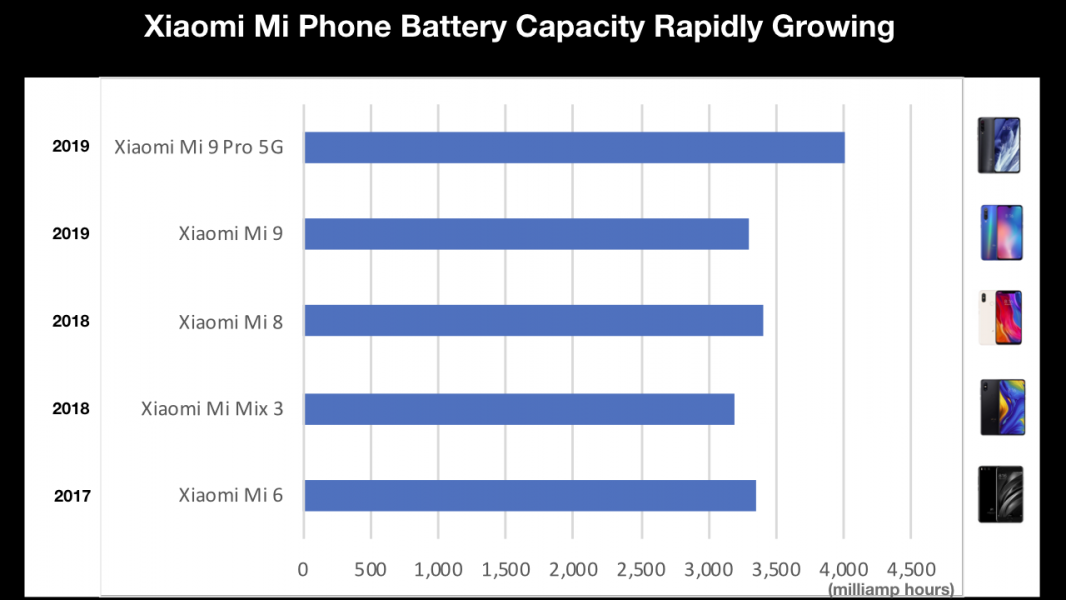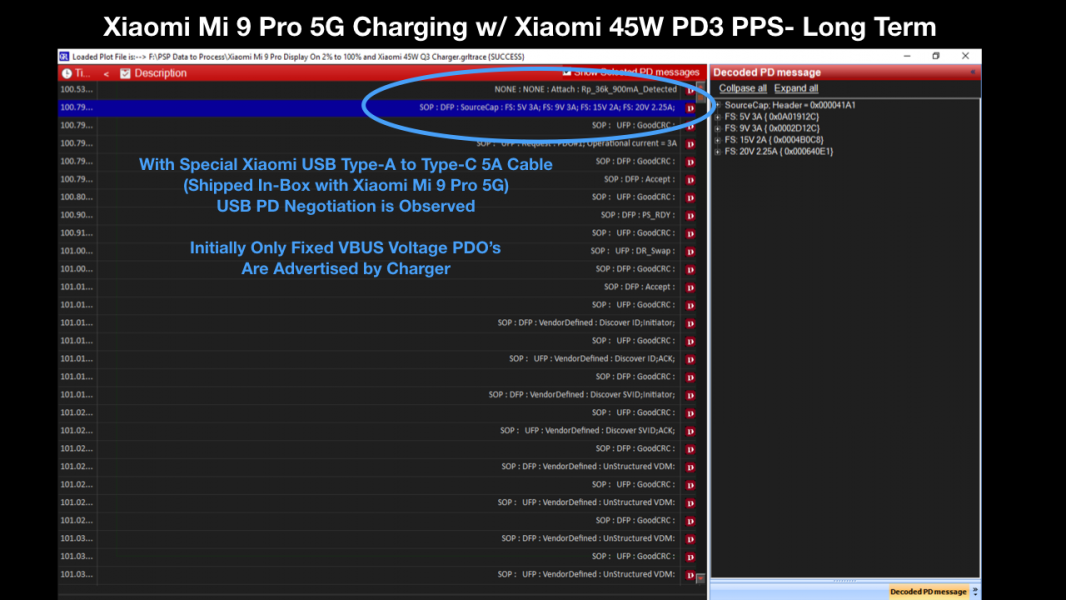The Xiaomi Mi 9 Pro 5G was launched with having the highest power USB Power Delivery and Qi charging available among other smartphones released in 2019. Like other phones launched in 2019, the Xiaomi Mi 9 Pro 5G battery capacity has made a big jump versus other previous Xiaomi phones.
The Xiaomi Mi 9 Pro 5G now has a battery with 21%-25% larger capacity than the Xiaomi Mi 9, Xiaomi Mi 8, Xiaomi Mi 6 and Xiaomi Mi MIX 3.
However the Xiaomi Mi 9 Pro 5G has made an enormous 102%-113% increase in max charging power to significantly reduce charging time.
Let's take a closer look at how the Xiaomi Mi 9 Pro 5G uniquely charges with USB Power Delivery (PD) technology using the Xiaomi 45W QC3 charger that was shipped in-box with the phone. The Xiaomi 45W QC3 charger has a USB Type-A port but surprisingly also supports USB PD 3.0 based PPS technology through the special 5A USB Type-A to Type-C cable that was shipped with the Xiaomi Mi 9 Pro 5G. This special cable probably re-purposes pins on the Type-A connector to be used to carry USB PD communication packets. This means that other normal USB Type-A to Type-C cables would not be able to support USB PD communication which we confirmed.
Although the Xiaomi Mi 9 Pro 5G supports Qualcomm Quick Charge 4+ (QC4+), it's interesting that Xiaomi chose to ship with a Qualcomm Quick Charge 3.0 (QC3) based charger that also supports USB PD over a USB Type-A connector using a special USB Type-A to Type-C cable instead of a QC4+ charger that naturally supports USB PD over a Type-C connector using a standard USB Type-C to Type-C cable. Unlike other special USB Type-A to Type-C cables from Huawei and OPPO, the special USB Type-A to Type-C cable does not use any sort of color marking scheme which makes it easy to lose and confuse with other cables. The only marking visible are small '5A' and 'L2' near the USB Type-A connector.
Xiaomi's use of a USB Type-A to Type-C cable to carry USB PD packets is similar to what we observed in the past with the Meizu Pro 7 Plus.
We use the GRL-C2 USB PD Tester and GRL-PSP Power Analyzer software from Granite River Labs to analyze the details on how the Xiaomi Mi 9 Pro 5G works with the Xiaomi 45W QC3 charger. When connecting the Xiaomi 45W QC3 charger to the Xiaomi Mi 9 Pro 5G we can see the USB PD negotiation.
First, we see that the Xiaomi 45W QC3 charger advertises four fixed PDO's: 5V@3A, 9V@3A, 15V@2A, 20V@2.25A.
The USB PD negotiation then goes through some sequences where Xiaomi products and Xiaomi special communication modes are identified.
The phone and charger then use this Xiaomi special communication mode to send Xiaomi defined messages to each other.
After these special Xiaomi messages are exchanged, the Xiaomi 45W QC3 charger now advertises three APDO's which allow variable VBUS voltage ranges: (3.3-10V)@4A, (3.3-11V)@3.5A and (3.3-20V)@2.25A, on top of the four fixed PDO's advertised earlier.
Note that these PDO and APDO power profiles are not listed on the external case of the Xiaomi 45W QC3 charger as is typically done with other chargers.
Note also the USB-IF specs do not allow for greater than 3A VBUS current through USB Type-A to Type-C cables (let alone this type of USB PD 3.0 PPS negotiation over a USB Type-A connector).
The Xiaomi Mi 9 Pro 5G then proceeds to select the (3.3-10V)@4A APDO and repeatedly makes different VBUS voltage/current requests from the Xiaomi 45W QC3 charger.
When the Xiaomi Mi 9 Pro 5G is fully drained and kept off, we connect the phone to the Xiaomi 45W QC3 charger. During the “Fast Charge” mode, VBUS power stays around 33W while VBUS voltage varies around 9V. During the “Cool Down” mode, VBUS voltage drops slightly while power drops to multiple levels with the phone's external temperature (which is recorded using a FLIR camera) increasing by 15° C. Finally, in “Saturation” mode the VBUS voltage stays constant while current gradually gets lowered until the phone’s battery is 100% full.
We now repeat the same testing and analysis, but this time with the Xiaomi Mi 9 Pro 5G drained to 2% and with the display and WI-FI kept active. Here, we see that during the “Fast Charge” mode, VBUS power stays at 33W for a very short period of time before going into a “Cool Down” mode where power drops to three different power levels with max temperature increase of 14° C. "Saturation" mode starts when the battery charge hits 90%. We can also see that even after the battery has reached 100% charge, with the display and WI-FI kept active, the phone is consuming about 7W dropping down to 4W.
If we look at the Xiaomi Mi 9 Pro 5G battery voltage and current charging levels, we can see that during the “Fast Charge” mode, the battery charging power level hits 28W. It's interesting that towards the end of the 'Saturation Charge' mode, Xiaomi shows 100% battery charge level even though the battery is still clearly charging.
Comparing how the Xiaomi Mi 9 Pro 5G charges when the phone is off versus when the display and WI-FI are kept active, we can see that the phone charges faster and warmer as it pulls overall high levels of power earlier when off.
Previously, Xiaomi phones like the Mi 9 had shipped with the Xiaomi 27W QC3 charger so let's see if the Xiaomi 45W QC3 charger actually charges faster with the Xiaomi Mi 9 Pro 5G versus this 27W charger. While the phone's display and WI-FI are kept active, we can see that the Xiaomi 45W QC3 charger charges must faster initially and achieves 100% charging about 30% faster than the Xiaomi 27W QC3 charger. The Xiaomi Mi 9 Pro 5G also gets warmer faster when using the Xiaomi 45W QC3 charger.
Despite Xiaomi Mi 9 Pro 5G's unorthodox implementation of USB Power Delivery technology over a USB Type-A connector, the charging behavior is quite impressive where 100% charge is achieved in ~63 minutes when the phone is off versus ~79 minutes when the phone's display and WI-FI are kept active.
The Xiaomi Mi 9 Pro 5G battery % rises at a similar rate as the iPhone 11 Pro Max until 80%, at which point the iPhone's battery charge % increase slows down dramatically. When compared to Samsung's Galaxy S10 5G and Samsung Galaxy Note10+, the Xiaomi Mi 9 Pro 5G shows much faster charging both initially and throughout the entire charge cycle, achieving 100% in less than 50% of the time taken by the Galaxy phones.
 GTrusted
GTrusted






































